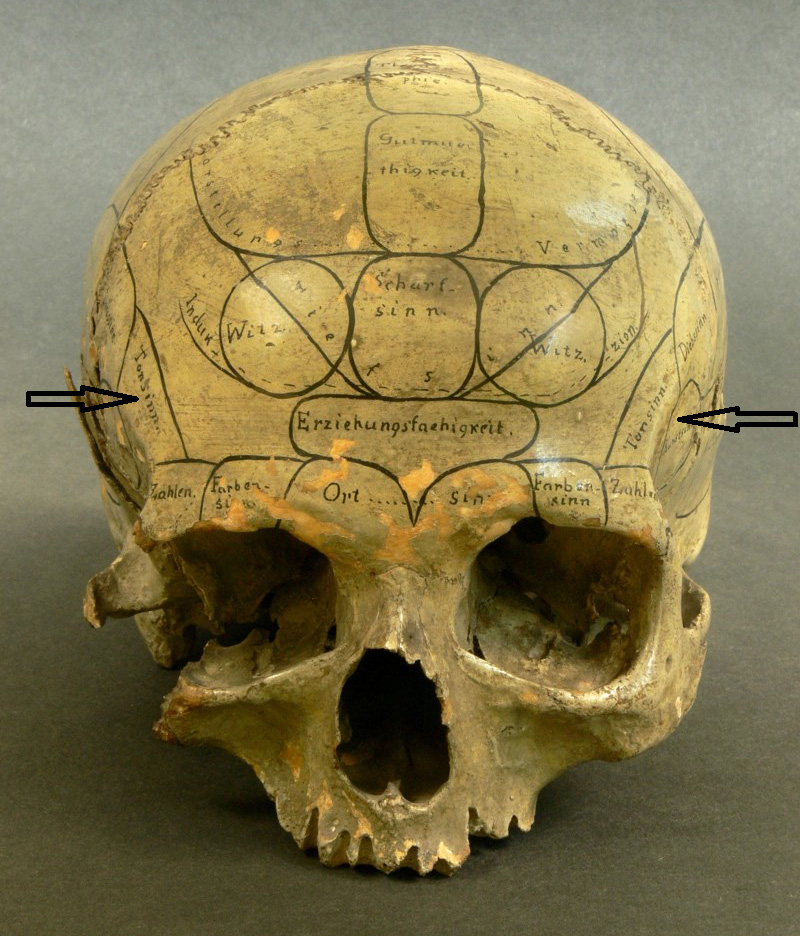
Music and the brain: revisiting J.F. Gall’s theories
SUBMITTED by PAUL ELING
Dr. Paul Eling is Associate Professor at the Radboud University Nijmegen – Donders Institute for Brain Cognition and Behaviour in the Netherlands.
It is really a nice surprise to see how special interests (music, instruments vs. cognitive neuroscience) can come together. Together with two colleagues, neuroscientists, we have been working on the ideas of the German-French anatomist and physician Franz Joseph Gall (1758-1828) on the functioning of the brain.
Unlike most philosophers and scientists at that time who wrote about the soul in general, Gall was particularly interested in why people differ in, for instance, the ability, to learn languages, draw paintings or play music. Gall was eager to get in touch with people with special talents, good or evil (e.g. murderers). From his youth, Gall had a great interest in nature, knew a lot about behavioral characteristics of all sorts of animals. Gall did not believe in an indivisible soul, but assumed that mental functioning was based on a set of 27 special faculties, amongst these, the faculty of music, in German called Ton-sinn. He explicitly argued that this is something different from having a ‘good ear’ for pure tone perception. This faculty is necessary for determining the relations between tones, for tone harmony. It plays a role in music perception but also in production, e.g., composition of music.
Between 1785 and 1805 Gall practiced in Vienna as general physician, and between 1796 and 1801 he gave many lectures for a general audience about his new ideas on the functioning of the brain. He thus met with many people, civilians, artists, writers and politicians. He gave many demonstrations for emperors, kings and dukes during his journey from 1805 to 1807, through Germany, Denmark, The Netherlands and ending in Paris, where he remained for the rest of his life.
It is commonly known that the origin of his theory about the brain lies in his early observations of fellow school mates who appeared to be very good at learning by heart and he associated this capacity with large, flaring eyes. However, in his description of the music faculty Gall notes that he was shown a girl, 5 years old, who had an amazing talent for singing. Obviously, this was not the result of much practice but of an inborn talent. And Gall then states that this girl formed the starting point for him to work systematically on his theory of brain functions or faculties, and to collect data. This in fact meant analyzing the skull of many people with special capabilities and looking for a ‘bump’ on the skull. This bump reflected, in Gall’s view, that the organ, situated in the part of the cerebral cortex underlying this bump, was extremely developed and the cause of the ‘talent’.
The young girl who formed the starting point for Gall’s more systematic attempt to develop his theory, which he preferred to call organology (he rejected the notion of phrenology) was called Bianchi. At the time Gall saw her she was 5 years old and we think this must have been somewhere between 1791 and 1796. However, we have not been able to trace a person with such a name, living at that time in Vienna, who could sing particularly well. We would be interested for any suggestions that might help us to solve this question.
Quite often Gall was regarded as a charlatan. The main argument is that most scientists did not believe in the ‘bumps’ on the skull. Another motive for the opposition towards Gall was the fear for materialism: if mental faculties depend on the gray matter of the brain, what role is left for the eternal soul? However, there were also a number of contemporary scientists who had great admiration for Gall. There was almost universal admiration for his anatomical studies of the brain and he is remembered for many original anatomical observations and discoveries. Moreover, Gall’s original approach, of rejecting practically all philosophies of the soul or mind as sheer speculations which are not based on observations of animals and humans, may be regarded as the beginning of what we now would consider as cognitive neuroscience.
Current studies of the mind and brain all look for specific faculties and do not differ in some principled ways from what Gall was trying to do. We now think that our brain imaging techniques are much better… but in a way, we are localizing functions in the brain, much like Gall did.
Current studies of the mind and brain all look for specific faculties (language, face perception, music, social cognition, seeking reward, spatial orientation) do not differ in some principled ways from what Gall was trying to do. We now think that our brain imaging techniques are much better than Gall feeling of the skull, but in a way, we are localizing functions in the brain, much like Gall. We do compare groups that are good in one faculty with groups that perform worse, very much like Gall was looking for talented people to find the bump, that is not visible in ‘ordinary’ people. This does not imply that Gall was correct all the time: the bumps he saw are not there. But his attempt to look at nature and infer from observations what might be fundamental functions underlying behavior seems to be a pointer in the right direction, a road we are following now.
Anybody interested in Gall and the music bump, please see our paper which was recently published:
Paul Eling, Stanley Finger and Harry Whitaker, Franz Joseph Gall and music: the faculty and the bump. In: Eckart Altenmüller, Stanley Finger and François Boller, editors, Progress in Brain Research,Vol. 216, Amsterdam: Elsevier, 2015, pp. 3-32.
PAUL ELING
